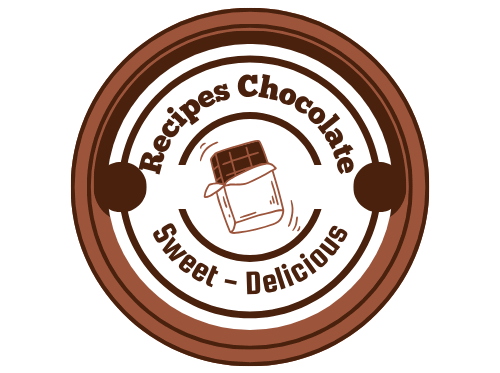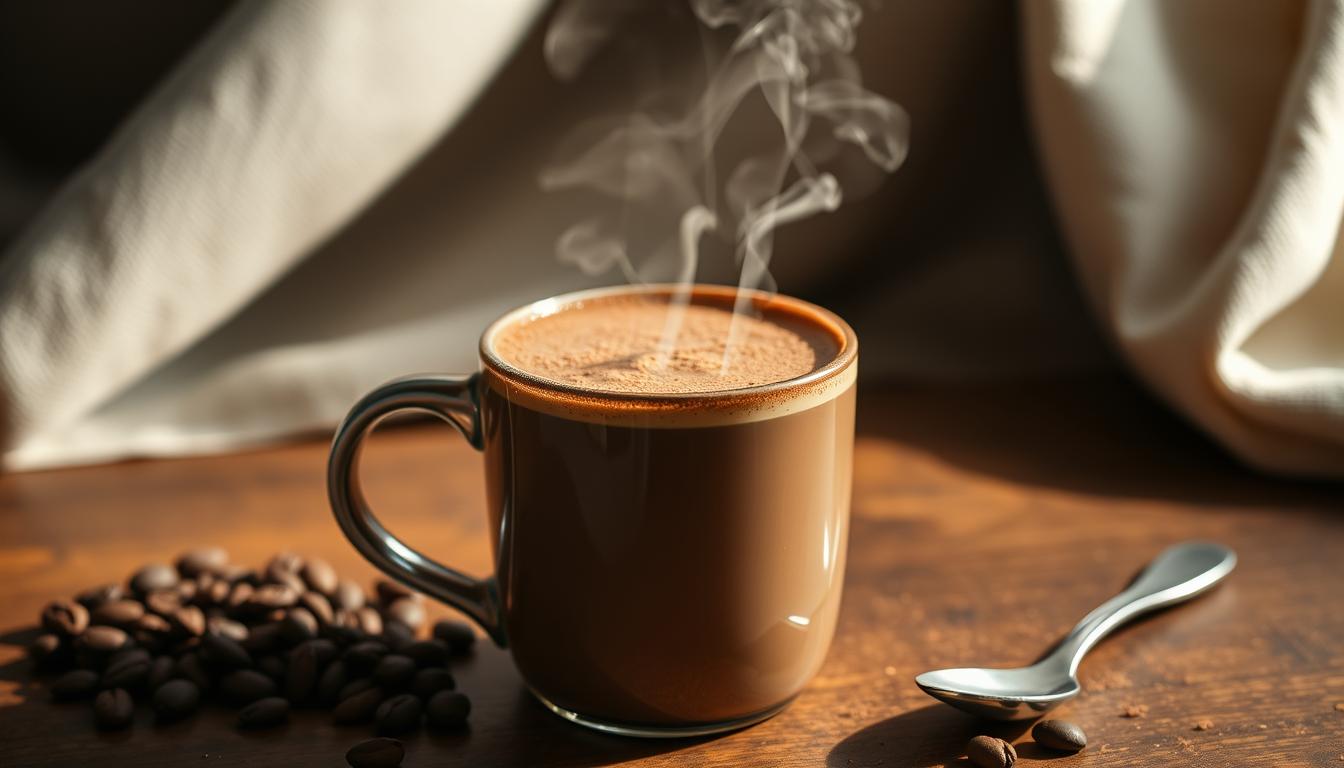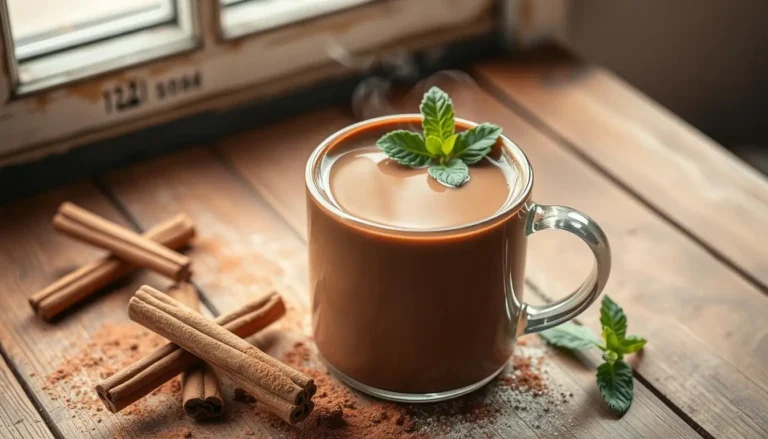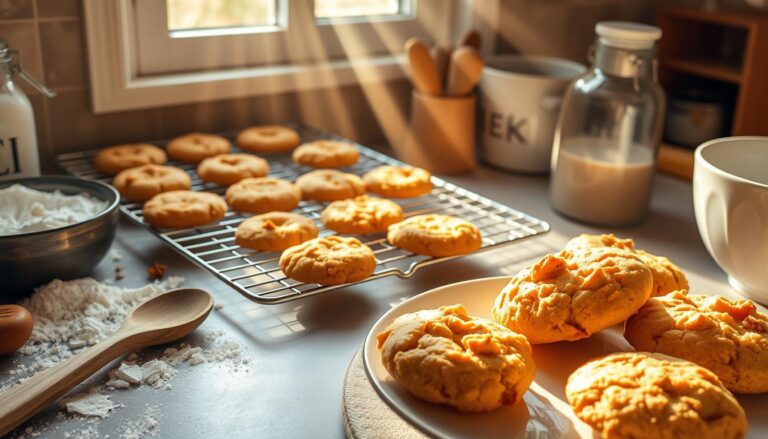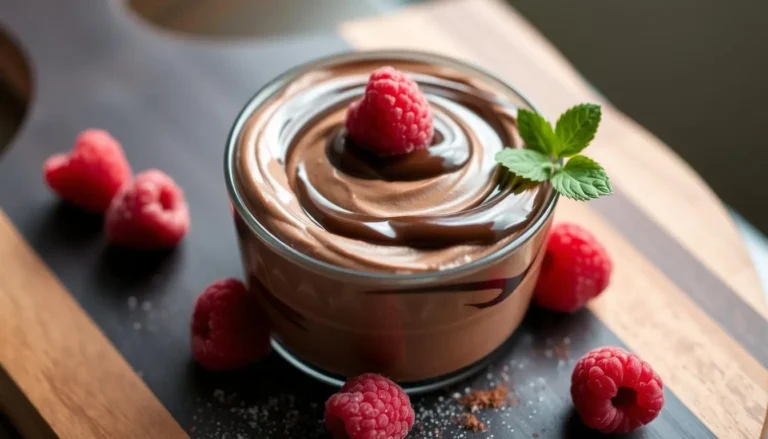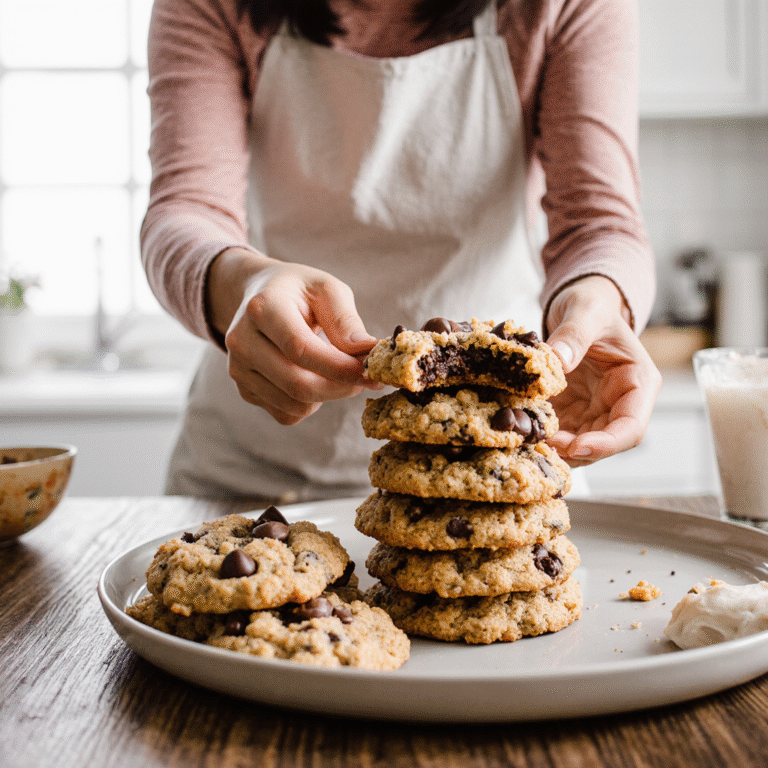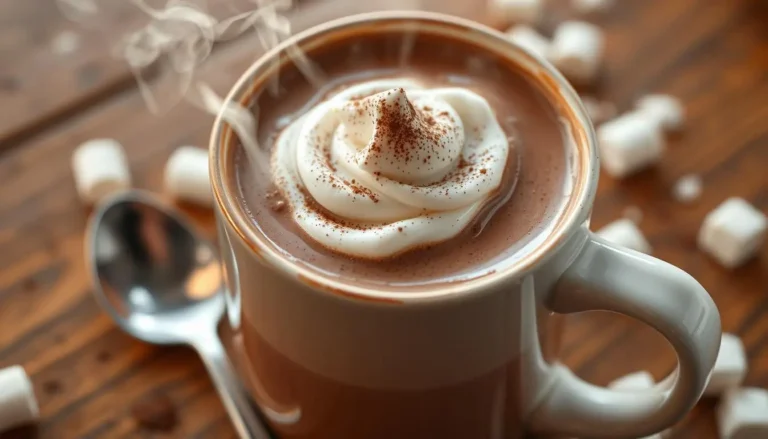Cocoa powder to make hot chocolate
Winter evenings make a simple cup of hot chocolate truly special. I remember my grandmother carefully adding cocoa powder to a warm mug. It was more than just a drink; it was a moment of warmth and love.
Cocoa powder is not just an ingredient; it’s the essence of perfect hot chocolate. Whether you love chocolate or just want a cozy treat, knowing about cocoa powder can make your hot chocolate amazing.
This guide will take you on a journey through the world of cocoa powder. We’ll explore its history, science, and how to make it into a luxurious drink. Get ready to discover the secrets of the best hot chocolate you’ve ever had.
Key Takeaways
- Cocoa powder is essential for creating rich, flavorful hot chocolate
- Understanding cocoa processing impacts drink quality
- Hot chocolate is more than a beverage – it’s a comforting experience
- Proper techniques can transform simple ingredients into gourmet drinks
- The right cocoa powder makes all the difference in taste and texture
Understanding the Magic of Cocoa Powder in Hot Chocolate
Cocoa powder makes a simple chocolate drink into a rich treat. It’s a journey of flavor, chemistry, and art in the kitchen.
The making of cocoa powder is key to great hot chocolate. Different ways of making cocoa change the taste and quality of your drink.
Types of Cocoa Processing Methods
Creating cocoa powder involves many steps. These steps shape its taste and quality:
- Fermentation of cocoa beans
- Roasting techniques
- Grinding and pressing processes
- Powder extraction methods
Natural vs. Dutch-Processed Cocoa
Knowing the difference between natural and Dutch-processed cocoa is important. It helps make the perfect hot chocolate. Here’s a quick guide:
| Natural Cocoa | Dutch-Processed Cocoa |
| Acidic flavor profile | Neutralized acidity |
| Lighter brown color | Darker, richer color |
| Works with baking soda | Requires different leavening agents |
Chemical Properties of Cocoa Powder
The magic of cocoa powder comes from its chemistry. Flavonoids, antioxidants, and special molecules give it a unique taste. They also offer health benefits in your drink.
Learning about cocoa powder’s details can turn your hot chocolate into a special treat. It becomes a sophisticated experience in the kitchen.
Essential Ingredients for the Perfect Hot Chocolate
Making the ultimate hot chocolate is more than just using cocoa powder. You need to pick high-quality ingredients that blend well together. Knowing how each part works can turn a simple drink into a special treat.
Begin with the base of your hot chocolate. While milk is traditional, you can try different liquids:
- Whole milk for rich, creamy texture
- Almond milk for nutty undertones
- Oat milk for smooth consistency
- Coconut milk for tropical sweetness
Cocoa powder is key for the flavor of your hot chocolate. Choose a high-quality powder with strong chocolate taste. Dark, unsweetened cocoa powders usually have the best flavor.
Sweeteners are important for balancing the taste. Here are some options:
- Granulated sugar
- Brown sugar for deeper caramel notes
- Honey for natural sweetness
- Maple syrup for complex flavor
Adding extras can make your hot chocolate even better. Try vanilla extract, cinnamon, or a pinch of sea salt for unique tastes.
“The secret to an amazing hot chocolate is balancing quality ingredients with personal creativity.”
Start your hot chocolate adventure by learning about these key ingredients. Each one helps make a drink that’s not only warm but also delightful.
The History and Origins of Cocoa Powder
Explore the captivating history of cocoa, a drink with ancient roots. The tale of cocoa powder and hot chocolate is filled with cultural innovation, culinary artistry, and global exchange.
The story of cocoa starts in Mesoamerica’s vibrant civilizations. The Mayans and Aztecs first found the magic of cacao beans. They didn’t just drink hot chocolate; they saw it as a sacred drink with deep spiritual meaning.
Ancient Mayan and Aztec Origins
Cocoa was more than a drink to these advanced societies. The Mayans and Aztecs made cocoa in special ways:
- Ground cacao beans into a bitter paste
- Mixed with water and spices like chili
- Used in religious ceremonies and as a form of currency
European Transformation of Hot Chocolate
When Spanish conquistadors found cocoa in the 16th century, they brought it to European courts. Europeans added sugar and milk, making the bitter drink sweet. This change made hot chocolate a favorite across the continent.
Modern Manufacturing Processes
Today’s cocoa powder shows centuries of progress. From hand-ground beans to modern industrial methods, makers now create consistent, flavorful cocoa powder. It’s ready to make delicious hot chocolate with a few easy steps.
How to Use Cocoa Powder to Make Hot Chocolate
Making the perfect hot chocolate starts with using cocoa powder right. Whether you love chocolate or just enjoy hot chocolate, learning to make it can make your home feel cozy.
Start with the best cocoa powder. The right way to mix it can turn simple hot chocolate into something special.
Essential Preparation Methods
- Stovetop Method: Whisk cocoa powder with milk for smooth consistency
- Microwave Technique: Quick and convenient for instant hot chocolate
- Double Boiler Approach: Professional-level chocolate drink preparation
Key Ingredients for Rich Hot Chocolate
| Ingredient | Quantity | Purpose |
| Cocoa Powder | 2-3 tablespoons | Base flavor and richness |
| Milk | 1 cup | Creamy texture |
| Sugar | 1-2 teaspoons | Sweetness balance |
Professional tip: Always sift your cocoa powder to prevent lumps and ensure a silky smooth hot chocolate. Try different milks like whole, almond, or oat milk to find your favorite.
“The secret to great hot chocolate is patience and quality ingredients” – Chocolate Experts
Remember, the water temperature is key. Avoid boiling your milk to prevent a bitter taste. Use gentle heat to bring out the chocolate flavors.
Selecting the Best Cocoa Powder for Your Drink
Choosing the right cocoa powder can make your hot chocolate amazing. The quality of your cocoa powder affects the taste and enjoyment of your drink.
When looking for the best cocoa powder, several important factors matter. Your choice will impact the flavor and quality of your hot chocolate.
Premium Brands That Deliver Excellence
Not all cocoa powders are the same. Some brands are known for their top-notch quality and taste:
- Valrhona – Known for professional-grade chocolate products
- Ghirardelli – Offers rich, intense cocoa powder
- Droste – A Dutch-processed cocoa with smooth consistency
- Guittard – Artisan chocolate maker with premium cocoa options
Decoding Cocoa Content Labels
Understanding cocoa content labels is key to making good choices. Look for these important signs:
- Percentage of cocoa solids
- Processing method (natural or Dutch-processed)
- Origin of cocoa beans
- Potential additional ingredients
Balancing Price and Quality
Premium cocoa powder might be pricier, but it makes a big difference in taste. Invest in quality for a better hot chocolate experience.
Try buying smaller amounts of high-end cocoa powder to save money. Your taste buds will thank you for the rich flavors of a well-chosen cocoa powder.
Common Mistakes When Making Hot Chocolate

A cozy kitchen counter with a steaming mug of homemade hot chocolate, surrounded by the essential tools and ingredients: a saucepan, whisk, cocoa powder, milk, and marshmallows. Soft, diffused lighting illuminates the scene, creating a warm and inviting atmosphere. In the foreground, a hand carefully stirs the mixture, showcasing the common mistakes to avoid – lumpy texture, overly sweet or diluted flavor. The middle ground features neatly arranged spices and flavorings, such as cinnamon sticks and vanilla extract, hinting at ways to elevate the classic recipe. In the background, a chalkboard or wooden sign displays handwritten tips for the perfect hot chocolate, emphasizing the importance of technique and ingredient ratios.
Making the perfect hot chocolate with cocoa powder can be tricky. Many home cooks make simple mistakes that ruin their chocolate drink. Knowing these common pitfalls will help you make a smooth, delicious drink every time.
Temperature control is key when making hot chocolate. Overheating can scald the milk and give it a burnt taste. Heat the milk gently, stirring constantly to avoid scorching.
- Lumpy Mixture Prevention
- Sift cocoa powder before mixing
- Gradually whisk powder into warm liquid
- Use a small amount of hot liquid to create a paste first
- Texture Troubleshooting
- Avoid using cold milk
- Stir continuously while heating
- Use a whisk for smoother integration
Another common error is using low-quality cocoa powder. The type of cocoa powder greatly affects your hot chocolate’s flavor and richness. Choose high-quality, pure cocoa powder for the best taste.
| Mistake | Solution |
| Lumpy Chocolate | Sift cocoa powder, create initial paste |
| Burnt Taste | Heat milk slowly, stir constantly |
| Weak Flavor | Use premium cocoa powder |
Mastering hot chocolate takes patience and practice. By avoiding these common mistakes, you’ll make your chocolate drink go from average to extraordinary.
The Perfect Temperature for Hot Chocolate Preparation
Making the perfect hot chocolate is more than just mixing cocoa and liquid. The temperature is key to creating a delicious drink that excites your taste buds.
Knowing the science behind hot chocolate temperature can change how you enjoy it. The best temperature for serving is between 160°F and 180°F. This range ensures flavors are fully developed without burning.
Scientific Basis for Ideal Serving Temperature
Temperature affects several important aspects when making hot chocolate:
- Flavor extraction from cocoa powder
- Optimal solubility of ingredients
- Preservation of delicate chocolate notes
- Comfortable drinking experience
Maintaining Heat Without Scorching
It’s important to avoid overheating for a great hot chocolate. Here are some expert tips to keep the temperature just right:
- Use a digital thermometer for precise monitoring
- Heat milk or water slowly and consistently
- Stir continuously to distribute heat evenly
- Remove from heat source immediately after reaching ideal temperature
Pro tip: Let your hot chocolate cool slightly before drinking. This enhances flavor and prevents mouth burns.
Enhancing Your Hot Chocolate with Flavoring Options
Turning a simple chocolate drink into a special treat is all about creative flavors. Your hot chocolate can be a blank canvas for your culinary dreams. It can take the classic cocoa drink to new heights.
Classic flavor enhancers can make your hot chocolate unforgettable. Here are some exciting options:
- Warming Spices: Cinnamon, nutmeg, and cardamom add depth to your chocolate drink
- Sweet Extracts: Vanilla, almond, or peppermint can create unique flavor profiles
- Unexpected Twists: Chili powder, lavender, or sea salt can surprise your taste buds
Baristas suggest trying layered flavors. A bit of chili can warm up your cocoa. Orange zest adds a bright, citrusy touch. The goal is to find flavors that complement the chocolate without overpowering it.
“Great hot chocolate is an art form that begins with quality cocoa and ends with imagination.” – Chocolate Experts
If you’re looking for something fancy, try these:
- Mexican-style hot chocolate with cinnamon and cayenne
- Lavender-infused cocoa with honey
- Salted caramel hot chocolate
- Mocha-inspired chocolate drink with espresso
Remember, the best hot chocolate starts with top-notch cocoa powder. Your adventure in flavors begins with choosing the best ingredients. Don’t be afraid to try new and exciting combinations.
Health Benefits of Cocoa Powder in Hot Chocolate

A close-up shot of an inviting mug filled with steaming hot chocolate, with a dusting of rich cocoa powder on top. The mug is set against a clean, minimalist background, bathed in warm, soft lighting that highlights the texture and depth of the cocoa powder. The image conveys a sense of comfort, indulgence, and the health benefits of cocoa, such as its antioxidant properties, potential to lower blood pressure, and ability to improve mood and cognitive function.
Discover the surprising health advantages hidden in your favorite warm beverage. Cocoa powder isn’t just a delicious treat – it’s packed with remarkable nutritional benefits that can support your overall wellness.
Hot chocolate made with quality cocoa powder offers more than just comfort on a cold day. The rich ingredients contain powerful compounds that can positively impact your health.
Antioxidant Powerhouse
Cocoa powder is a concentrated source of antioxidants called flavonoids. These remarkable compounds help protect your body from harmful free radicals. The benefits include:
- Reducing inflammation
- Supporting heart health
- Potentially lowering blood pressure
- Improving blood flow
Nutritional Value Analysis
A closer look at cocoa powder reveals an impressive nutritional profile. Let’s break down the key nutrients found in a typical serving:
| Nutrient | Amount per 2 tbsp | Health Benefit |
| Magnesium | 52 mg | Supports muscle and nerve function |
| Iron | 0.9 mg | Helps prevent anemia |
| Zinc | 0.5 mg | Boosts immune system |
When selecting cocoa powder for hot chocolate, opt for unsweetened varieties to maximize health benefits. Dark cocoa powder typically contains the highest concentration of beneficial compounds.
Remember that while cocoa powder offers numerous health advantages, moderation is key. Enjoy your hot chocolate as part of a balanced diet to reap its nutritional rewards.
Storage Tips for Maintaining Cocoa Powder Freshness
Keeping your cocoa powder fresh is key for great chocolate drinks. The right storage can make your cocoa last longer and taste better.
Several things affect how fresh your cocoa powder stays. Light, moisture, and temperature can all harm it.
- Choose an airtight container with a tight-fitting lid
- Store in a cool, dark pantry or cupboard
- Keep away from heat sources and direct sunlight
- Maintain consistent room temperature
Knowing the best storage conditions is important. Temperature changes and humidity can ruin cocoa’s taste.
| Storage Condition | Recommended Practice | Potential Impact |
| Temperature | 60-70°F (15-21°C) | Preserves flavor and prevents clumping |
| Humidity | Less than 50% | Prevents moisture absorption |
| Container Type | Opaque, airtight | Protects from light and air exposure |
Look out for signs your cocoa powder is going bad. Clumps, strange smells, or color changes mean it’s time for new cocoa. Most cocoa powders stay fresh for 2-3 years if stored right.
Pro tip: Always use a clean, dry spoon when measuring cocoa powder to prevent moisture introduction.
By sticking to these storage tips, your cocoa powder will always be ready for delicious chocolate drinks.
Dairy and Non-Dairy Options for Hot Chocolate
Making the perfect hot chocolate is more than just the cocoa powder. The type of milk you use can change the taste, feel, and health benefits. If you can’t have dairy or prefer vegan options, there are many milk alternatives to try.
There are now many milk options for hot chocolate. Each one is great for different tastes and diets. Let’s look at some of the most popular ones:
- Cow’s Milk (Traditional): Creamy and rich
- Almond Milk: Light and nutty flavor
- Oat Milk: Naturally sweet and smooth
- Coconut Milk: Tropical undertones
- Soy Milk: Protein-rich and neutral taste
Plant-Based Alternatives
Plant-based milks add special qualities to your hot chocolate. Each one has its own texture and taste. These can make your hot chocolate better or slightly different.
| Milk Type | Creaminess | Flavor Impact | Nutritional Bonus |
| Oat Milk | High | Mild, Sweet | Fiber-rich |
| Almond Milk | Low | Nutty | Low Calorie |
| Coconut Milk | Very High | Tropical | Healthy Fats |
Texture and Taste Comparisons
When picking a milk for your hot chocolate, think about creaminess, taste, and feel. Try different ones to find your favorite!
Tip: For the creamiest hot chocolate, pick milks with more fat. Oat and coconut milks are usually the creamiest.
Troubleshooting Common Hot Chocolate Problems
Making the perfect hot chocolate can be tricky. Even experienced cooks face challenges. Knowing common issues with cocoa powder helps make a smooth, delicious drink every time.
Let’s look at some common problems and how to solve them:
- Grainy Texture: To avoid lumpy hot chocolate, sift cocoa powder before mixing. Whisk well or blend for a silky drink.
- Separation Issues: Milk proteins can cause separation. Use low heat and stir constantly for a smooth drink.
- Weak Flavor: For a stronger flavor, use high-quality cocoa powder. Adjust the powder-to-liquid ratio too.
Temperature is key in making hot chocolate. Too high heat can burn the milk and cocoa, ruining the taste. Warm it gently between 140-160°F to keep the chocolate flavor rich.
“The secret to perfect hot chocolate is patience and attention to detail.” – Professional Barista Tip
Choose premium cocoa powder for better flavor and mixing. Try different methods to find your favorite way to make hot chocolate.
- Use a whisk for manual mixing
- Consider an immersion blender for extra smoothness
- Gradually add cocoa powder to prevent clumping
Remember, practice makes perfect. Every try brings you closer to the ultimate hot chocolate.
Seasonal Variations and Special Occasions
Hot chocolate can change with the seasons and special times. Each time of year offers a chance to make this classic drink new and exciting. It becomes a fun drink for any event.
Summer needs a cool twist on hot chocolate. Try these refreshing changes:
- Frozen hot chocolate smoothies
- Iced cocoa with whipped cream
- Chocolate cold brew blends
Winter is the time for rich, indulgent hot chocolate. Make festive versions that warm you up:
- Peppermint hot chocolate with candy cane garnish
- Spiced Mexican-style cocoa with cinnamon
- Salted caramel hot chocolate
Special occasions are perfect for creative hot chocolate. For holidays like Christmas, Halloween, or Valentine’s Day, add themed decorations and unique flavors. Use marshmallow shapes, colored sprinkles, and seasonal toppings to make it unforgettable.
Pro tip: Start with high-quality cocoa powder for the best hot chocolate. Your creativity can turn a simple drink into a special treat.
Professional Barista Tips for Hot Chocolate Making
To make hot chocolate special, you need to use expert techniques. These methods turn a simple drink into a treat for the senses. Baristas know how to make hot chocolate that tastes great and looks amazing.
Want to make hot chocolate as good as what you get at cafes? It’s all about knowing how to use cocoa powder and advanced methods.
Frothing Techniques
Getting the froth just right is key for great hot chocolate. Here’s what pros do:
- Use whole milk for the best froth and creamy texture
- Get a good milk frother or steam wand
- Heat the milk to 150-160°F for perfect foam
- Whisk consistently for smooth, creamy foam
Presentation Methods
How your hot chocolate looks is just as important as how it tastes. Here’s what baristas say:
- Use fancy glassware or ceramic mugs
- Top with high-quality cocoa powder
- Make artistic swirls with whipped cream
- Sprinkle gourmet chocolate shavings
“The art of hot chocolate is about creating an experience, not just a drink.” – Professional Barista Wisdom
By mastering these tips, you can make your own hot chocolate as good as a pro’s. It will impress and delight everyone who tries it.
Scaling Recipes for Different Serving Sizes

A minimalist and elegant still life composition showcasing various serving sizes of rich, creamy hot chocolate. In the foreground, a tall glass filled with the aromatic beverage, its surface adorned with a luscious layer of frothy milk foam. Beside it, smaller mugs and cups of varying sizes, each containing the same indulgent chocolate elixir. The middle ground features an array of cocoa powder, cinnamon sticks, and grated chocolate, hinting at the ingredients and process behind the perfect homemade hot chocolate. Soft, warm lighting casts a cozy glow over the scene, creating an inviting and comforting atmosphere. The background is simplistic, allowing the main subjects to take center stage and highlighting the different serving options for this beloved winter treat.
Making hot chocolate for different groups can be challenging. Whether it’s for one or many, knowing how to adjust your recipe is key. This ensures the flavor and texture stay just right.
Here are some important tips for scaling your hot chocolate:
- Keep the same ratio of cocoa powder to liquid
- Adjust sweeteners the same way to keep the taste
- Use a kitchen scale for accurate measurements
For a single cup, use 1-2 tablespoons of cocoa powder in 8 ounces of milk. For more, just multiply the ingredients. This way, every cup will be as tasty as the last.
Here are some serving size tips for hot chocolate:
- Single Serving: 8-10 ounces
- Small Gathering: 32-48 ounces (4-6 servings)
- Large Party: 64-96 ounces (8-12 servings)
Professional tip: For big batches, mix the cocoa powder first. Then add the hot milk. This method ensures even flavor and avoids clumps.
The secret to perfect hot chocolate is consistent proportions, regardless of serving size.
Try different cocoa powders and adjust amounts as needed. Quality ingredients are crucial for a great hot chocolate experience.
Conclusion
Your journey through the world of cocoa powder and hot chocolate has given you key knowledge. You now know how to make amazing chocolate drinks at home. From learning about different processing methods to finding ways to add more flavor, you’re ready to take your hot chocolate to the next level.
Cocoa powder lets you get creative with your hot chocolate. You can try classic recipes or mix in new flavors. The tips and tricks from this guide will help you experiment with confidence. Making great hot chocolate is both an art and a science, needing the right ingredients and a bit of personal touch.
As you keep exploring hot chocolate, remember its rich history and cultural roots. Every cup is a journey through flavors, connecting you to chocolate’s long history. Your new understanding of cocoa powder will make your homemade hot chocolate truly special and comforting.
With time and enthusiasm, you’ll create your own unique hot chocolate style. It will delight your senses and warm your heart. Enjoy the fun of making perfect chocolate drinks that bring happiness and warmth with every sip.
FAQ
What’s the difference between natural and Dutch-processed cocoa powder?
Natural cocoa powder comes from roasted cocoa beans, keeping its acidic taste. Dutch-processed cocoa powder is made alkaline, giving it a milder flavor. This change affects how it works in recipes and the taste of your hot chocolate.
How long can I store cocoa powder?
Cocoa powder lasts 2-3 years in an airtight container in a cool, dry place. Keep it away from heat and moisture. Always check for spoilage signs like clumps, bad smells, or color changes before using.
Can I make hot chocolate with water instead of milk?
Yes, you can make hot chocolate with water, but it’s creamier with milk. Water-based hot chocolate is less creamy and flavorful. Adding a bit of cream or butter can improve it if you use water.
Is cocoa powder healthy?
Cocoa powder is full of antioxidants, minerals, and mood-boosters. But, commercial mixes often have added sugars. For health benefits, use pure cocoa powder and control your sugar intake.
What’s the best way to prevent lumps in my hot chocolate?
To avoid lumps, whisk cocoa powder into warm liquid first. Then, slowly add more liquid while stirring. A whisk or blender helps make it smooth.
Can I use cocoa powder in cold drinks?
Yes! Mix cocoa powder with cold milk and sweetener for iced hot chocolate. Use a blender or shaker for a smooth mix. Some prefer warming the mix first and then cooling it with ice.
What’s the ideal temperature for serving hot chocolate?
The best temperature for hot chocolate is 140-160°F (60-71°C). It’s hot enough to enjoy but won’t burn your mouth. Let it cool a bit before serving.
Are there vegan options for making hot chocolate?
Yes! Use plant-based milks like almond, oat, or coconut milk for vegan hot chocolate. Choose pure cocoa powder and vegan sweeteners like maple syrup. Non-dairy milks make creamy, tasty hot chocolate.
Did You Try Our Recipe ?
There are no reviews yet. Be the first one to write one.
